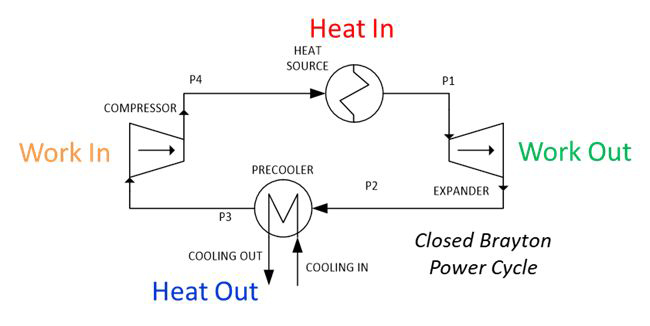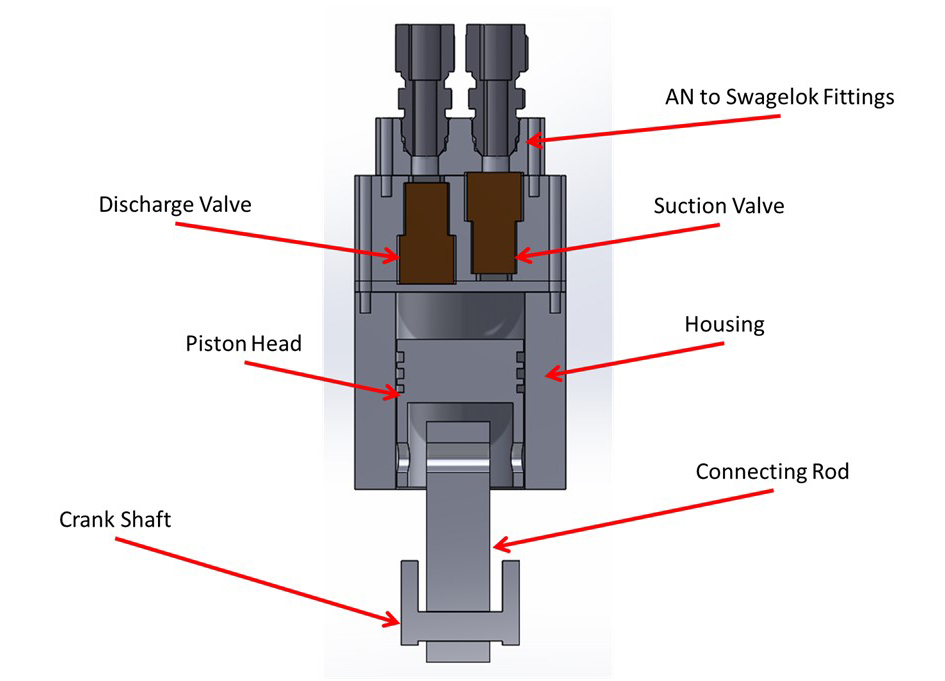Background
There has been significant success with the development and demonstration of MW-scale supercritical CO2 power systems at SwRI. At the same time, kW-scale power generation has been largely confined to less-efficient organic Rankine cycle technology. A supercritical CO2 closed Brayton cycle as shown in Figure 1 can provide a dramatic increase in the efficiency of small-scale thermal power systems. The technical challenge is the power density of supercritical CO2 power cycles: Expander technology has been developed for turbomachinery that is effective at the MW-scale, but no developed expander technology exists for a kW-scale system. Successful development of the expander (and compressor) machinery for a system of 15–500 kW power output would be a significant improvement for mobile waste heat recovery systems (under development for on-highway heavy-duty trucks, with future use in marine and other high-load applications) and stationary systems (industrial and commercial waste heat recovery, remote power generation).
Approach
Ongoing refinement of the cycle simulations is occurring, along with use of the simulations for cycle design optimization to identify the most promising configuration of the system for an initial demonstration. The major focus of the current phase of the project is to identify and address critical technology gaps that could prevent successful design of a prototype system. Addressing these will set the stage for the final phase, prototype design and build.

Figure 1: Closed supercritical CO2 Brayton cycle.
Accomplishments
The project has proceeded from initial concept validation to addressing critical technology gaps in preparation for prototype design and build. Continual refinement of cycle modeling continues to show a broad applicability of the supercritical CO2 power cycle to waste heat recovery in mobile applications. The concept design for a piston compressor with commercially available valves has been completed, and work is underway to design a dual-acting piston expander that will be coupled on the same crankshaft as the compressor and coupled to a motor/generator for waste heat recovery.

Figure 2: Supercritical CO2 compressor concept.
